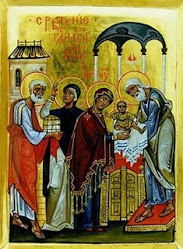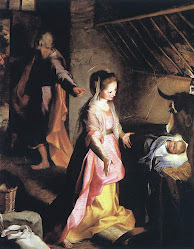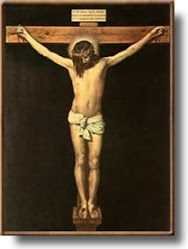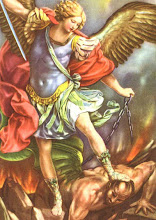The Secret Gospel of Mark and Carlson’s The Gospel Hoax: Smoking gun? (NT Apocrypha 22)
Posted by Phil Harland. Categories / Series: Christian Apocrypha and "Gnosticism" , Gospels , Pseudonymity, authority, and canon
Since it first came to light in a manuscript at Mar Saba in 1958, the Secret Gospel of Mark — contained within what claimed to be a letter from Clement of Alexandria to one Theodore (c. 200 CE) — has been the centre of controversy (online text and discussion here or here). The letter addresses the claims of a “gnostic” sect called the Carpocratians, who were interpreting and supplementing a version of the Gospel of Mark, supposedly to support their particular sexual practices (supposedly involving homosexuality of some sort). Clement writes to Theodore to assure him that the approach of the Carpocratians was a distortion of both the original version of Mark and a subsequent, special edition Mark designed to reveal the deeper teachings (Clement uses the analogy of the Greco-Roman mysteries, including hierophant, to describe this mystic second edition by the original author of Mark). Clement speaks negatively only of the Carpocratians’ misuse or misinterpretation or interpolation of this second, mystic or secret edition of Mark, not against the second edition itself. Clement then cites passages from this Secret Mark, including the following most famous one:
‘For example, after “And they were in the road going up to Jerusalem” and what follows, until “After three days he shall arise”, the secret Gospel brings the following material word for word: “And they come into Bethany. And a certain woman whose brother had died was there. And, coming, she prostrated herself before Jesus and says to him, ‘Son of David, have mercy on me.’ But the disciples rebuked her. And Jesus, being angered, went off with her into the garden where the tomb was, and straightway a great cry was heard from the tomb. And going near, Jesus rolled away the stone from the door of the tomb. And straightaway, going in where the youth was, he stretched forth his hand and raised him, seizing his hand. But the youth, looking upon him, loved him and began to beseech him that he might be with him. And going out of the tomb, they came into the house of the youth, for he was rich. And after six days Jesus told him what to do, and in the evening the youth comes to him, wearing a linen cloth over his naked body. And he remained with him that night, for Jesus taught him the mystery of the Kingdom of God. And thence, arising, he returned to the other side of the Jordan.” After these words follows the text, “And James and John come to him”, and all that section. But “naked man with naked man,” and the other things about which you wrote, are not found.’ (trans. by Morton Smith, cited in full online here.
At the recent SBL meeting, I picked up Stephen Carlson’s book The Gospel Hoax: Morton Smith’s Invention of Secret Mark (Waco: Baylor UP, 2005) which, appropriate to its subject, is an exciting read. Carlson argues that the Secret Mark “discovered” by Morton Smith was, in fact, a hoax perpetrated by Smith himself (many have suggested this but no one had really offered substantial evidence to support the charge). Carlson argues that the manuscript itself (in terms of the handwriting) reflects a modern production, that there are clear signs of modernity in the letter of Clement as a whole, and that there are also clear anachronisms in the quotation from Secret Mark within the letter. Moreover, Carlson claims that Smith had the “means, motives, and opportunity” to falsify this letter from Clement, and there is substantial evidence that he did. Not only that, but the letter contains a “triple confession” by the hoaxer himself, including the reference to Madiotes (”swindler” or “baldy”), “Clement’s” discussion of salt (which, Carlson claims, alludes to a modern company called Morton Salt Company), and references to Morton Smith’s own scholarly works (relating to Mark 4:11 and sexual prohibitions in rabbinic sources). (Carlson appropriately distinguishes between a modern “hoax” and a modern “forgery” which involve quite different motives. Also see the earlier discussion on whether “forgery” is an appropriate term in studying pseudonymous writings in antiquity, where I emphasize the problem in identifying motives).
Moreover, if you were already inclined to view Secret Mark as a hoax, the book will likely strongly confirm your view. If you were undecided on which way to go (as I was) or were inclining to authenticity, then you may feel that further nuance and clarification is needed for Carlson’s theory to be accepted. In other words, this may not yet be the smoking gun.
I do not plan to engage all of the material in the book, which would probably take more time than it took to write the book itself (Carlson does a thorough job of looking at, and connecting, details!). But what I thought I would do here is point to what I consider Carlson’s strongest evidence pointing towards the probability of this letter of Clement being a fake, and to what I consider the relative shortcomings in presentation (if the aim is to settle this question in scholarship). In my opinion, the strongest evidence Carlson presents relates to his analysis of the handwriting (pp. 25-35), which he suggests is characteristic of a fake (with shaky lines, blunt ends, and pen lifts). Carlson does detailed work, looking at specific Greek characters and pointing to what he sees as clear signs of a fake. He then compares the handwriting in the “Clement” letter to another manuscript identified (by Smith himself) as 20th century and attributed to one Madiotes (an allusion to the hoaxer himself [Smith], according to Carlson).
This handwriting section would have been far more convincing, however, if Carlson had also had the handwriting analyzed (and reported on these analyses) by several other experts without telling them what precisely Carlson was after (in other words, without telling them what the writing was, or why he wanted it analyzed, beyond the characteristics that such experts would naturally report on in terms of idiosyncracies ). My impression was that the expert handwriting analysis was done by Carlson himself. It’s not that I distrust Carlson’s skill in analyzing (not in the least!); it’s just that I (and many other readers) have little or no expertise in order to assess each of Carlson’s specific decisions in the handwriting analysis, as well as the overall conclusions regarding how these characteristics can be explained in an overall pattern (e.g. whether some other explanation, such as a shaky hand of the 18th century monk or “scribe”, can account for certain features, and which ones). Further opinions would assist in this process of assessment by the reader. This accessibility to other handwriting opinions is even more pressing since Carlson was already heavily invested in an argument against authenticity when he engaged in the handwriting analysis. As I read, I did not often see many signs that he was likely to challenge or nuance any of his own conclusions on each specific handwriting feature, and in how they fit together into a pattern. I wondered whether another expert might provide other judgements or possibilities in some of the key cases, and in assessing the overall picture, and it would have been helpful if Carlson had engaged such interpretive issues.
Moreover, the other evidence Carlson presents does indeed fit with a theory of a fake or forgery or hoax, but can also be read in other ways as well (some of Carlson’s connections and interpretations are quite speculative, including the supposed identification of anachronisms, which are indefinite or in the eye of the beholder in many cases). I was also uncertain whether the ingenious “intricate three-level textual puzzle” (p. 79) was indicative of Smith’s genius in hoaxing (as suggested by Carlson) or Carlson’s genius in analyzing and making detailed connections.
I was hoping that the book would put the whole debate to rest, as some of the promotional materials (and some earlier talk on discussion lists) suggested. (I should also stress that I have yet to read right through the most extensive work which argues for authenticity, Scott Brown’s Mark’s Other Gospel: Rethinking Morton Smith’s Controversial Discovery [Waterloo: Wilfrid Laurier U. Press, 2005]). I have always hestitated from making historical use of Secret Mark because of the ambiguity surrounding it, and was hoping for some resolution. This is not yet the smoking gun, but perhaps Carlson will supplement his book with further evidence, primarily relating to the handwriting analysis. As I said, Carlson’s book is a fun read, and he has clearly done very solid work in preparing it, dealing with very specific clues that others have not focussed on or put together in this precise, intriguing way. And he certainly knows how to present an argument in a lively way!
(This post should not be considered a full, academic book review, but rather some spontaneous comments on specific issues in the book).
UPDATE:
Now see Stephen Carlson’s post in which he provides the comments of one professional forensic document expert on Carlson’s analysis of the letter of “Clement” (I’m sure that such experts are EXPENSIVE, so my ideal outlined above may be unaffordable anyways–I don’t mean to ask for the impossible). I should also clarify that I never doubted the competence of Carlson’s handwriting analysis; rather, I wonder whether some other handwriting experts (who are also competent) might argue things differently if not already predisposed to a hoax or forgery theory for this particular document (differences of opinion, rather than differences of ability). It seems that this hired expert was very much aware of Carlson’s attempt to prove the document a fake, however, which is not ideal . As well, I still wonder about the “elderly or ill writers” exception that even this expert mentioned in passing as an explanation for at least some of the anomalies in the “Clement” letter (elderly and/or ill monks were not scarce, I would suggest). But there may well be some of the handwriting characteristics which cannot be explained by the elderly monk theory (especially if the 20th century “Madiotes” handwriting does indeed match up with the “Clement” handwriting, as Carlson argues). It was nice of Stephen to provide at least that additional professional opinion (which he had already had done) in response to my wonderings. (By the way, in response to Stephen’s other comment, I would in no way like to suggest that Morton Smith was less than brilliant as a scholar. He was certainly human though).
FURTHER UPDATE: For those of you who have not yet heard, I believe a future issue of the Expository Times will include interactive reviews and responses between Stephen Carlson and Scott Brown. A review of Carlson’s book (by Paul Foster) has already appeared there (subscription required).
(Jan. 2): Now see my newer post on Scott Brown’s review of Carlson’s book (in Expository Times).
http://www.philipharland.com/Blog/2005/11/24/the-secret-gospel-of-mark-and-carlsons-the-gospel-hoax-smoking-gun-nt-apocrypha-22/
CHRISTIAN RELIGION ARTICLES
Iscriviti a:
Commenti sul post (Atom)





































Nessun commento:
Posta un commento